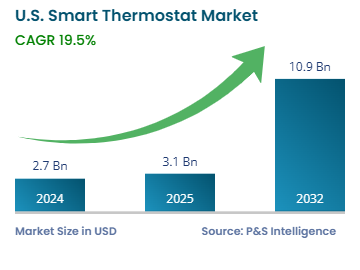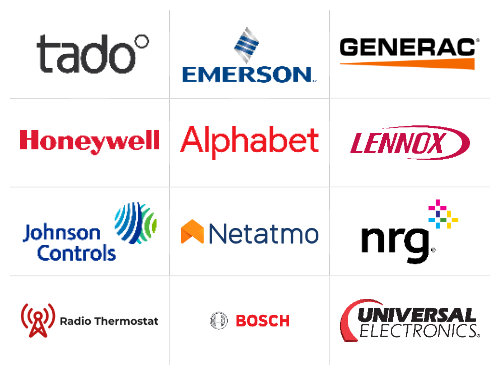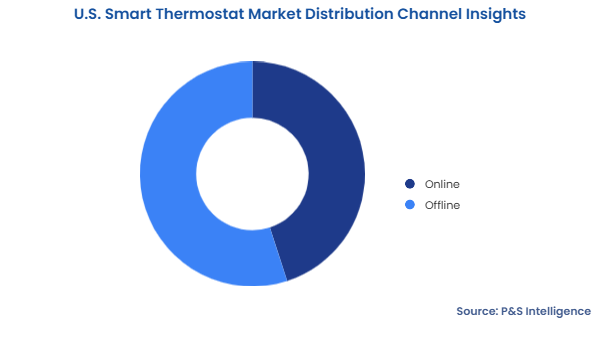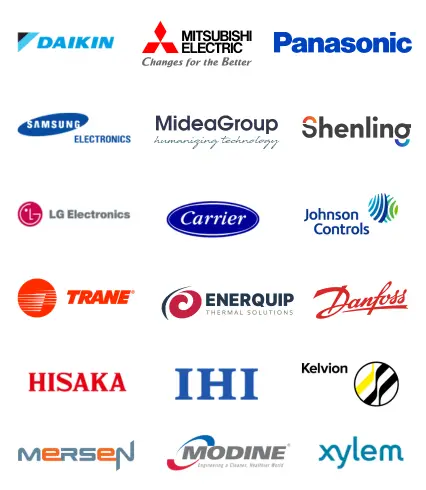Market Statistics
| Study Period | 2019 - 2032 |
| 2024 Market Size | USD 2.7 Billion |
| 2025 Market Size | USD 3.1 Billion |
| 2032 Forecast | USD 10.9 Billion |
| Growth Rate (CAGR) | 19.5% |
| Largest Region | West |
| Fastest Growing Region | South |
| Nature of the Market | Fragmented |
Report Code: 13444
This Report Provides In-Depth Analysis of the U.S. Smart Thermostat Market Report Prepared by P&S Intelligence, Segmented by Products (Connected Smart Thermostat, Learning Smart Thermostat, Zoned Systems, Smart Sensor Based Thermostat), Connectivity Technology (Wireless Network, Wired Network), Distribution Channel (Online, Offline), Application (Single Family Homes, Multi Family Residential Buildings, Commercial Buildings, Industrial Facilities), and Geographical Outlook for the Period of 2019 to 2032
| Study Period | 2019 - 2032 |
| 2024 Market Size | USD 2.7 Billion |
| 2025 Market Size | USD 3.1 Billion |
| 2032 Forecast | USD 10.9 Billion |
| Growth Rate (CAGR) | 19.5% |
| Largest Region | West |
| Fastest Growing Region | South |
| Nature of the Market | Fragmented |


|
Explore the market potential with our data-driven report
The U.S. smart thermostat market valued USD 2.7 billion in 2024, and this number is expected to increase to USD 10.9 billion by 2032, advancing at a CAGR of 19.5% from 2025 to 2032. This is because of consumers’ increasing preference for energy-saving products and the presence of numerous smart home/sustainability initiatives.
Smart thermostats optimize energy consumption based on user behavior and environmental conditions and allow users to remotely control heating and cooling systems through Wi-Fi, AI-powered learning, and smart sensors. They also offer built-in voice assistant capabilities between smart thermostats and devices, powered by Amazon Alexa and Google Assistant, and seamlessly integrate with other IoT devices. Commercial and industrial facilities are actively adopting modern climate control systems to reduce operational expenses and boost power efficiency.
The learning smart thermostat is the largest category with 45% share because it provides users with AI automation, energy efficiency, and convenience. They automatically modify their settings based on user behavior, occupancy data, and weather patterns, to optimize energy consumption. The devices are popular owing to their compatibility with smart home ecosystems, voice assistants, and IoT platforms. Government initiatives and ENERGY STAR certifications drive consumers to buy these devices for residential and commercial needs.
The products covered in this report are:
Wireless is the larger category with 65% share because of the extensive use, straightforward operation, and effortless connection of Wi-Fi with smart home networks. Through mobile applications and voice assistants, users can manage and check their home temperature levels using a Wi-Fi-connected smart thermostat. Wi-Fi connectivity provides fast transmission and network integration, which eliminates the need for supplemental hubs or bridges.
The connectivity technologies covered in this report are:
HVAC contractors & installers are the largest category with 35% share because homeowners and businesses hire professionals to ensure proper installation, compatibility with HVAC systems, and maximum energy efficiency. Leading thermostat brands work with HVAC contractors & installers for product promotion and setup. Large commercial and residential projects depend heavily on contractors to link smart thermostats with their advanced heating and cooling infrastructure.
The distribution channels covered in this report are:
Single-family homes are the largest category with 55% revenue because of the wide adoption of smart technologies, growing energy efficiency awareness, and government support. The main preferences of homeowners using smart thermostats include economic benefits, voice assistant capabilities, and device network connectivity. Wi-Fi connectivity and learning thermostats are most popular in single-family homes.

Major application areas covered in this report are:
Drive strategic growth with comprehensive market analysis
The West region is the largest revenue contributor with 50% share due to the increasing adoption of smart homes, strict energy efficiency regulations, and diverse climate in California, Washington, and Oregon. Smart thermostat adoption is influenced by the strict energy efficiency standards and incentive programs. The Western region displays two different climate zones, which create summer heat in California and Arizona and cold winter temperatures in mountain regions, thus requiring automated temperature management and energy-efficient systems.
Here are the regions covered in the report:
The market is fragmented because of the existence of many different organizations, including well-established companies and emerging competitors. The market consists mainly of major companies, such as Emerson Electric Co., Honeywell International Inc., and Johnson Controls International plc, along with many smaller companies and innovative startups. Market fragmentation occurs because various companies regularly release new technology features in these devices.
Want a report tailored exactly to your business need?
Request CustomizationLeading companies across industries trust us to deliver data-driven insights and innovative solutions for their most critical decisions. From data-driven strategies to actionable insights, we empower the decision-makers who shape industries and define the future. From Fortune 500 companies to innovative startups, we are proud to partner with organisations that drive progress in their industries.


Working with P&S Intelligence and their team was an absolute pleasure – their awareness of timelines and commitment to value greatly contributed to our project's success. Eagerly anticipating future collaborations.
McKinsey & Company
IndiaOur insights into the minutest levels of the markets, including the latest trends and competitive landscape, give you all the answers you need to take your business to new heights
We take a cautious approach to protecting your personal and confidential information. Trust is the strongest bond that connects us and our clients, and trust we build by complying with all international and domestic data protection and privacy laws
Customize the Report to Align with Your Business Objectives
Request the Free Sample Pages